There are many great books about heroic polar explorers, and numerous technical papers by arctic researchers-often rather dry. Few papers with a narrative on the scientific exploration of the arctic during the 19th Century seem to exist as a half way house, accesible to laymen and experts alike, so it is hoped this article may fill a gap.
It was always intended to exist electronically, so links to the relevant information source have been made, rather than citing a printed reference. Whilst generally the narrative can be followed without needing to click on the link, many are interesting in their own right and are often well worth a diversion, (but don't forget to come back.)
Few external 'official 'instrumental records exist for this period-or are sporadic in area or time scale- so observations made at the time and place are important to our understanding as to what happened to arctic ice and temperatures in this era. This article has two converging themes; the search for the North West passage and the scientific explorations of the region by a former whaler.
This is somewhat longer than most blog articles, in fact-in truth- it is a a bit of an epic. So close the curtains, turn off the mobile, feed the dog, grab a drink, and order in the pizza for about an hour. Then sit back as the story begins in 1817 when the Royal Society used the enormous resources at their disposal to investigate the claim that ;
The Arctic Is Melting
"It will without doubt have come to your Lordship's knowledge that a considerable change of climate, inexplicable at present to us, must have taken place in the Circumpolar Regions, by which the severity of the cold that has for centuries past enclosed the seas in the high northern latitudes in an impenetrable barrier of ice has been during the last two years, greatly abated....President of the Royal Society, London, to the Admiralty, 20th November, 1817, Minutes of Council, Volume 8. pp.149-153, Royal Society, London. 20th November, 1817.(from web Link)
(see additional*)
..... this affords ample proof that new sources of warmth have been opened and give us leave to hope that the Arctic Seas may at this time be more accessible than they have been for centuries past, and that discoveries may now be made in them not only interesting to the advancement of science but also to the future intercourse of mankind and the commerce of distant nations." A request was made for the Royal Society to assemble an expedition to go and investigate.
The quote from the Royal Society is fairly well known, however it is only part of the extract. The missing part - detailed under- heralded the start of modern arctic science.
*Additional...
"Mr. Scoresby, a very intelligent young man who commands a whaling vessel from Whitby observed last year that 2000 square leagues (a league is 3 miles) of ice with which the Greenland Seas between the latitudes of 74° and 80°N have been hitherto covered, has in the last two years entirely disappeared. The same person who has never been before able to penetrate to the westward of the Meridian of Greenwich in these latitudes was this year able to proceed to 10°, 30′W where he saw the coast of East Greenland and entertained no doubt of being able to reach the land had not his duty to his employers made it necessary for him to abandon the undertaking.
This, with information of a similar nature derived from other sources; the unusual abundance of ice islands that have during the last two summers been brought by currents from Davies Streights (sic) into the Atlantic.
The ice which has this year surrounded the northern coast of Ireland ( see footnotes1) in unusual quantity and remained there unthawed till the middle of August, with the floods which have during the whole summer inundated all those parts of Germany where rivers have their sources in snowy mountains."
The Royal Society President at the time was Sir Joseph Banks, a botanist of great renown, standing and influence, who helped to precipitate the era of Arctic science that followed.
To put this period into context, and to understand the resources and motivation that could be commanded for exploration, it should be recognised that Britain had a vast number of 'surplus' ships.This from Wikipedia;
"...at the end of the Napoleonic Wars the Admiralty found itself in possession of large numbers of enterprising officers and thousands of unrequired ships."ThIs variability of the ice during the early 1800's, combined with a desire to expand the British empire, gain prestige, and provide alternative routes to her colonies in the east, had prompted the British govt to renew their hope that the fabled Northwest passage could be navigated at last. Finding this route was a long standing ambition, as in 1776 the British Government had offered a reward of up to £20,000 to anyone who could penetrate north of 89 degrees, (this was East or West of the Bering Straits, re-confirmed by Parliament statute in 1818)
The first serious expedition to attempt this passage was by Captain James Cook in 1778 (the year Sir Joseph Banks was elected as President of the Royal Society) so let us backtrack briefly from the 1817 letter, as this date has such a bearing on spurring future scientific arctic exploration.
The expedition by Captain James Cook eventually ended in tragic failure after he failed to find the passage and decided to overwinter in the South, he was killed in Hawaii. (Sir Joseph Banks had sailed with him in 1768 in the expectation of collecting many new botanical specimens-numerous plants are named after Banks.)
On this 1778 expedition Cook had on board as sailing master on the 'Resolution,' 22 year old William Bligh. On board the sister ship 'Discovery' was George Vancouver after whom the island was named.
Source: The Bering Strait Crossing
(See third expedition from p61)
Intriguingly "Mr. Scoresby, a very intelligent young man" had a renowned father. Whilst Scoresby (senior) like his fellow Whitby neighbour James Cook did not gain this £20,000 reward either, he did reach beyond 81 degrees in 1806, breaking through the ice at Spitzbergen only 510 miles from the North Pole. This achievement was not bettered for 21 years, and then only by travelling for some of the way over the ice, not on board a ship.
Sir Joseph Banks would have been aware of the (periodic) warming before 1817. Whalers commented on it from 1790 and reports from the Hudson Bay co mentioned variable amounts of ice throughout the period from 1786 to 1810. Banks had been particularly interested in reports about 'unprecedented break up of sea ice at Greenland' in 1815. This from Wikipedia;
"Whalers in the North Atlantic in 1815 and 1816 described an unprecedented breaking up of the ice in the Davis Strait, that had apparently sent icebergs as far south as 40°N. The prevailing theory held that seawater could not turn to ice (supported by observations that melted icebergs released fresh water), and therefore that all Arctic ice formed around coastlines. It further held that the waters around the North Pole might therefore be ice-free, forming an Open Polar SeaWhen Sir Joseph Banks received additional information from the trusted source of young Mr Scoresby during 1817, that must have convinced him that something extraordinary was happening, and he facilitated the resources of the British Admiralty to investigate.
If the barriers of ice surrounding this open sea were breaking up, then there might be an opportunity to sail across the top of the North American continent, either by by the proposed Northwest Passage, or perhaps by sailing north past Spitzbergen, across the Polar Sea, and down through the Bering Strait."
From Wikipedia;
"John Barrow, the Second Secretary to the Admiralty encouraged interest in the possible existence of a Northwest Passage.With the support of Sir Joseph Banks, he prepared two simultaneous expeditions, one to be led by John Ross, heading West through the Davis Strait, and the other to be led by David Buchan, taking the polar route. An arrangement of prizes for achievement both West and North were adopted by an Act of Parliament in 1818. Thus began a series of expeditions that lasted for sixty years."The various wars against Napoleon and the US will have prevented Banks from previously mustering ships from the Admiralty for serious exploration concerning the earlier reports of melting ice. To this might be added that perhaps no one had approached him on the subject before, who he trusted enough to take at their word and authorise the necessary expedition (and expenditure.)
This changed in 1817, for as it happened Sir Joseph Banks had previously been introduced to Mr Scoresby in London who, after leaving Edinburgh University, had spent a short time in the Royal Navy. At the time of the letter both Scoresby junior and his father were whalers of renown and knew much about arctic conditions.
William Scoresby junior is central to the early part of the story of modern scientific arctic exploration and the following article describes his activities as a whaler who eventually came to know more of the science of the arctic than any man previously.
Source Link:
"At the age of 10 Scoresby made his first Arctic whaling voyage aboard his father's ship, the "Resolution," which he later commanded in 1811. In 1813 he established that the temperature of polar waters is warmer at great depths than at the surface."The Arctic Whaling Journals of William Scoresby the Younger. Vol. I. The Voyages of 1811, 1812 and 1813. Edited by C. IAN JACKSON 2003. pp. lxi + 242. 9 monochrome illustrations, 5 maps. ISBN 0 904180 82 4.
(There is a second volume covering subsequent years).
His subsequent Account of the Arctic Regions with a History and Description of the Northern whale Fishery (1820) contained his own findings as well as those of earlier navigators. There is an intriguing entry from the book, as subsequently recorded by his chroniclers;
"The uncharted coastline of east Greenland became clear of ice around 1820, and in 1822 Scoresby, in the midst of an arduous whaling voyage, sailed along some 400 miles of this inhospitable landscape, charting it, and naming point as he went in honour of scientific and other friends, chief of which was Scoresby Sound, named for his father. Almost all his place names survive today."That Scoresby junior was a man to be believed when he claimed that the arctic was melting can be further seen here in this extract;
"Carrying on with great success the most demanding and arduous of all maritime activities -the hunting and capture of whales - he yet collected over a period of some 15 years data on sea currents and temperatures, ice formation and movement, wind directions and velocities, magnetic variations, marine organisms, biology of whales, structure of snow crystals and much besides, gathering all this original work in the historic-volume classic Account of the Arctic Regions. The publication of this work in 1820 marks the beginning of the scientific study of the polar regions."So we have clear evidence of substantial melt in the years prior to 1817, during 1817 around 1820 and that ice returned in subsequent years but then retreated again, as recorded here;
Source Link:
"On the voyage to Greenland in 1828, Captain Graah fell in with the first ice in 58° 52′ lat. n., and 41° 25′ w. Greenwich, which is only 57′ s., and about 77 nautical miles to the eastward of Cape Farewell ; and he says, " Since 1817, I do not know that the ice has been seen so far to the eastward of the Cape." - ' Narrative of an Expedition to the East Coast of Greenland, by Cnpt. W. A. Graah, Royal Danish Navy,' p. 21, (Note; Cape Farewell is at the extreme southern tip of Greenland) map here.
The summer of 1816 was exceptionally cold (the year without a summer- probably due to the eruption of Mount Tambora in Indonesia on 10 April 1815) A technical explanation of the year without a summer is linked here;
Source Link:
The Hudson Bay ships bringing fur to London were actually frozen in during this period, whilst 1817 was an "Enso - el nino year" with the late winter of 1816 and summer of 1817 being warm, matching reports from earlier years that the ice was periodically melting, with a great deal of open water, and as reported by the Hudson bay co, and by others, as having an 'unprecedented break up' in 1815 and 1816. In 1817 Scoresby contacted Banks about the melting, In 1820 Scoresby found the ice around Greenland was melting and in 1822 mapped much of what had previously been an inhospitable coast.
Now it is useful to peer review the information gathered to date- with other contemporary accounts-in order to separately confirm the evolving picture of fluctuating ice extent as well as arctic winters and summers of greatly varying intensity all of which led to a general melting as the climate changed, which precipitated an official British expedition in 1818.
Contemporary reports from the time include the following 1817 book;
Source Link:
"We learn that a vessel is to be fitted out by Government for the purpose of attempting again the north-west passage, the season being considered as peculiarly favourable to such an expedition. Our readers need not be informed that larger masses of ice than ever were before known have this year been seen floating in the Atlantic, and that from their magnitude and solidity, they reached even the fortieth latitude before they were melted into a fluid state. From an examination of the Greenland captains, it has been found that owing to some convulsions of nature , the sea was more open and more free from compact ice than in any former voyage they ever made: that several ships actually reached the eighty-fourth degree of latitude, in which no ice whatever was found; that for the first time for 400 years, vessels penetrated to the west coast of Greenland, and that they apprehended no obstacle to their even reaching the pole, if it had consisted with their duty to their employers to make the attempt. This curious and important information has, we learn, induced the Royal Society to apply to ministers to renew the attempt of exploring a north-west passage as well as to give encouragement to fishing vessels to try how far northward they can reach , by dividing the bounty to be given, on the actual discovery, into portions, as a reward for every degree beyond eighty-four that they shall penetrate For the same reason we think it would be advisable for the merchants engaged in the Greenland whale fishery not to postpone the sailing of their ships to the usual season but expedite them at once so as to take advantage of the temporary fresh."As aditional background to the period, linked below are the annual Board of Trade journals dating back to 1676, covering Newfoundland.
Source Link:
"...preventing the construction of non-fishery related buildings near the water, no officers are employed in the fishery, explanation given to the catching and curing of fish, mentions "ice islands" which impeded the ships on the seal fishery," (T Duckworth CO194/49 Reel B-682 5 June 1810Note; This illustration of arctic Sea Islands comes from 1818.
The extensive Board of Trade journals are a great fount of social history of Newfoundland, the arctic whalers and sealers, and of the fish traders of the West of England who largely controlled the trade. Scoresby and his father are mentioned various times.
On Sept 16 1809 mention is made of 'the harsh winter,' July 1818 'of the long and vicious winter,' Oct 1821 'winters of wretchedness and distress'.
The great variations in ice amounts and warmth and cold, is also recorded in the following, condensed from the records of the Hudson Bay company, which appear to demonstrate that climate change is not a new phenomena.
"Over the fifteen years between 1720 and 1735, the first snowfall of the year moved from the first week of September to the last. Also, the late 1700s were turbulent years. They were extremely cold but annual snow cover would vary from 'extreme depth' to 'no cover'. For instance, November 10th 1767 only one snowfall that quickly thawed had been recorded. June 6, 1791 many feet of snow in the post's gardens. The entry for July 14, 1798 reads '...53 degrees colder today than it was yesterday."The following is a modern day reconstruction of sea ice around Newfoundland from 1810 to 2000 demonstrating the huge variability (which compares with modern times) and perhaps illustrates the 60/70 year arctic oscillation amongst other cycles. (Scroll down to the heading "195 years of sea ice ice off Newfoundland")
Source Link:
Following this is a fascinating account recovered from a Hudson bay ships log of the winter of 1816, judged the most severe in the entire record.
"The autumn of 1815 was an anxious period for Joseph Berens, Jr., the governor of the Hudson's Bay Company in London. This was the season in which the Company's ships usually returned from the Bay with their harvest of furs, but the voyage of 1815 was truncated by Hudson Strait pack ice, which prevented the return of the ships Eddystone and Hadlow through Hudson Strait into the Atlantic Ocean. Faced with the prospect of overwintering in the Bay, both vessels sailed to the comparatively safe anchorage of Strutton Sound in James Bay (Fig. 3) and were to remain there, ice-bound, until 12 August of the following year. The governor of the Company, being unaware of the fate of the Eddystone and Hadlow, dispatched the 1816 flotilla of ships on 12 May - almost three weeks earlier than the usual departure date. Under normal circumstances, an early entrance into Hudson Strait presaged an arduous, prolonged passage through severe pack ice, but in 1816 the brig Emerald and ship Prince of Wales encountered exceptional ice congestion in the strait. The two vessels finally entered Hudson Bay on 6 September, 51 days after."Source Link:
Even more remarkable in this relatively recent document (drawing on historic sources) are the annual indices of summer sea ice from 1750 to 1870 (on page 122) and further references to the records of the Hudson bay co, which again illustrate the fluctuating ice levels noted elsewhere. (This account should be read in conjunction with the link immediately above it.)
Clearly the eruption of Tambora (or other factors) had a profound effect on the climate of the Arctic over a very short period, as previous mentions of especially harsh winters in Newfoundland in previous decades are hard to find. Whether soot particulates from the eruption could have fallen on the arctic to cause the melting is doubtful, as no discolouration of the ice/snow can be found in any record, so the net effect of the eruption is probably to have caused the severe ice mentioned in the 'year without a summer', which then quickly disappeared in the Enso year. This chart demonstrates the 1816-17 spike in sulphate particles, produced by Tambora, in the Greenland ice.
This from Dai et al, 1991 also shows a spike of similar amplitude in 1810, from an unknown eruption, thought to be one of the Andean volcanoes.
There are many more accounts similar to those above recording great variations in arctic ice and weather over these decades. We are able to pin point another reference to 1810 conditions, as according to the book 'Ice Hunters' by Shannon Ryan, in that year the comment 'the ice conditions prevented the ships reaching the seal herds' is described in detail (an event briefly mentioned in the Board of Trade Journals).
There are various interesting observations made by whalers in this book concerning the Arctic conditions;
"ice could whirl about as if in a whirlpool": 'soft ice' in FebruarySo there were considerable variations in ice levels which, as the perception until then had been of a perpetual wild icy wilderness, were thought at the time to be a substantial deviation from the norm (but appears from the viewpoint of 2009 to be the norm)
'the large fields of ice which drift southwards in March and April from the polar sea': 'Great stretches of open water.'
We shall pick up the story of the North West passage again, which is so closely bound to the exploration of the arctic, immediately following the interchange between Scoresby junior and Sir Jospeh Banks in 1817. This extract from the Royal Society;
'By the early 19th century it had become a cartographic challenge to record the wide blank spaces in the Arctic region, primarily to discover a North-West Passage to the Pacific Ocean.Before reverting to the Royal Society source, we may pick up the activities surrounding Franklin's disappearance in 1845 from this 1857 book which details the search for the lost expedition carried out four years earlier (Link).
At the British Admiralty, John Barrow FRS championed the dispatch of several naval expeditions. The Royal Society advised on equipment and instruments, staffing and, crucially, the areas of research which were to be investigated. The North-West Passage was attempted in 1818 by John Ross in the Isabella with William Parry in the Alexander. Among the party was Edward Sabine FRS, recommended by the Royal Society as the expedition's astronomer.
Sabine also over wintered with Parry in the Arctic during 1819-20, the first British team to do so. Sabine's magnetic observations, which earned him the Royal Society's Copley Medal, were preliminary steps in the study of magnetic variation, instigating a major international project under British leadership. This required vast quantities of data and investment in facilities and personnel, as well as political support from the Admiralty and the Royal Society.
The Arctic expeditions had left an 'unexplored quadrilateral' of 70,000 square miles. Barrow and Sabine again suggested a North-West Passage expedition, arguing that it would help to complete a magnetic survey of the world. The Royal Society gave its consent and the Erebus and Terror were once again used in an expedition captained by Sir John Franklin.
This time, the ships were fitted with steam engines and extra iron hull plating to battle the polar ice. Supply novelties such as tinned food were added to the technologically well-equipped party which sailed on 19 May 1845, and were last seen by two whaling vessels at the end of July, before vanishing into the ice. A rescue was demanded by Lady Jane Franklin, '
(To put it in context, Franklin's efforts to find the iconic North West passage had captured the public imagination, and with the demands from his wife for the British government to effect a rescue, this extraordinary plan was suggested)
"The proposition made by Mr. Gale through the London newspapers to endeavour to discover the whereabouts of Sir John Franklin by a balloon ascent has called forth, in Paris, a letter from a M. Dupuis Delcourt - alleging that the first idea of such an ascent in the Polar regions was made by him in a publication nearly twenty-five years ago and was repeated in another publication in 1845. But this is not all. M. Delcourt is not content with robbing the English Lieutenant of his laurels, gravely assures the world that he is about to promulgate a project for undertaking the circumnavigation of the globe, by means of balloons; and says that he shall appeal to the government, to foreign and national academies, and to other learned bodies for the means of executing his project. As we have not yet got beyond that state of aerostatic science, in which the crossing of the Alps in a balloon is deemed a marvellous exploit - it may be doubted whether the Frenchman's scheme will meet with much encouragement."Unsurprisingly this suggestion never got off the ground...Hah! Who said history was dull?
But what of Franklins' expedition? This from the Royal Society web site again;
'....but hope ended with the 1857-59 expedition of Francis'It is interesting to examine old documents as they hold many clues to the state of the arctic ice at various times in our history and don't have the 'agenda' that many do today. That arctic ice was highly variable in depth and extent is obvious from the numerous accounts passed down to us, and that the climate changed is also evident.
This from a collection of papers from the Royal Geographic society dated 1875.
Source Link:
First extract
"1 ' Reise til Ostkysten af Gronland,' 1832, and translated by Macdougall, 1837.
There is another bay which I could not investigate to its bottom on account of the immense masses of ice that were setting out, and which is called by the natives Ikak and Ikarsek {Sound). It runs between Karsarsuk and Kingatok, and its length is from Karsarsuk to its end about 15 German miles ; it is situated in 72 D 48′, and the sea, at its entrance, is covered by numerous islands. All the natives living in this neighbourhood assured me unanimously that there had been a passage formerly to the other side of the land."Second extract
"An observation which it is interesting to mention here, and which gives a proof of the very little difference between the temperature of the surface and that at some depth, is mentioned in the Voyage of Captain Graah, p. 21. He says," The 5th of May, 1828, in lat. 57° 35′ N., and 36° 36′ w., Gr., tbe temperature of the surface was found 6°-3 (46°-2 Fahr.), and at a depth of 660 feet 5°5 + K. (44°-5Fahr.)." This proves that there is no cold submarine current in the place alluded to to the s.e. of Cape Farewell. A still more conclusive experiment is recorded by Sir Edward Parry in the account of his first voyage, June 13, 1819 : in lat. 57° 51′ n., long. 41° 5′, with a very slight southerly current, the surface tempera-ture was 40J° Fahr. ; and at 235 fathoms 39°, a difference of only 1J°."Third extract
"156 DR. EAE, 1853-54 - ANDERSON, 1855.
Cape Parry was passed at midnight, and we came across some heavy ice, being the first met with since leaving the straits. On the 30th it was so close as to compel us to haul in shore, affording a great contrast with the state of the ice at the same period two years ago, when the pack was 30 miles from the land."This is an extract from 1868 concerning a British expedition to Greenland, a land which was then an almost unknown quantity but whose coast it will be remembered Scoresby junior had found to be clear of ice in 1820, had subsequently iced up again, then found by Captain Graah in 1828 to be clear again. Apparently conditions had changed once more;
Forth extract
"We lived for the greater portion of a whole summer at Jakohshavn, a little Danish post, 69° 13' n., close to which is the great Jakohshavn ice-fjord, which annually pours an immense quantity of icebergs into Disco Bay. In early times this inlet was quite open for boats ; and Nunatak (a word meaning a " land surrounded by ice ") was once an Eskimo settlement. There is (or was in 1867 ) an old man (Manyus) living at Jakohshavn whose grandfather was born there. The Tessiusak, an inlet of Jakohshavn ice-fjord, could then be entered by boats. Now-a-days Jakohshavn ice-fjord is so choked up by bergs that it is impossible to go up in boats, and such a thing is never thought of. The Tessiusak must be reached by a laborious journey over land ; and Nunatak is now only an island surrounded by the inland ice, at a distance - a place where no man lives, or has, in the memory of any one now living, reached.Fifth extract
Both along its shore and that of the main fjord are numerous remains of dwellings long uninhabitable, owing to it being now impossible to gain access to them by sea. The inland ice is now encroaching on the land. At one time it seems to have covered many portions of the country now bare. In a few places glaciers have disappeared. I believe that this has been mainly owing to the inlet having got shoaled by the deposit of glacier-clay through the rivers already described. I have little doubt that - Graah's dictum to the contrary, notwithstanding - a great inlet once stretched across Greenland not far from this place, as represented on the old maps, but that it has also now got choked up with consolidated bergs.
In former times the natives used to describe pieces of timber drifting out of this inlet, and even tell of people coming across ; and stories yet linger among them of the former occurrence of such proofs of the openness of the inlet."
"On some of the islets - notably on Hellwald's and Brown's - were found West Indian fruits washed up by the Gulf Stream ; hence they were named " The Gulf Stream Islands." Yet only about two centuries ago the Dutch took soundings on the very spot where these islands have since been gradually raised above the sea. It is also said that the whale (Balcena mysticetus) has left the Spitzbergen Sea, owing to the waters having got too shallow for it..."Sixth extract
"For three centuries and a half the Norman colonies of Greenland continued to flourish ; upwards of 300 small farms and villages were built along the shores of the fiords from the island of Disco to Cape Farewell....and Greenland became the see of a Bishop. The ancient Icelandic and Danish accounts of the transactions are corroborated by the interesting remains which may be seen in the Scandinavian museum at Copenhagen.The last extract gives a flavour of the era we will explore in a future article, but illustrates that even 150 years ago the Viking colonisation of such an apparently inhospitable place as Greenland was recognised as out of the ordinary.
During the whole of this period no indigenous race was seen in that land, and no one appealed to dispute the possession of Greenland with the Norman colony. A curious account of a voyage is extant, during which the Normans reached a latitude north of Cape York ; yet there is no mention of any signs of a strange race. The Normans continued to be the sole tenants of Greenland, at least until the middle of the fourteenth century."
With these reports we are now getting closer to the end of the 19th century and Nansen's explorations take centre stage.
This journey by Nansen in 1893 was from an extract written in 1897 and taken from the above; (Background note - The Fram was designed specifically to drift in the ice whilst gathering information in the hope of reaching the North pole which was thought to be surrounded by open water).
Source Link:
"The Fram alone was provided with all that modern ship-building contributes for safety and comfort. The ship was of four hundred tons burden, - stronger than any similar mass of timber and steel that was ever put together. A triple expansion engine made her a fair steamer with the least expenditure of fuel. There were electric lights, for which energy was supplied by the steam-engine, by a windmill, or, in case of need, by a contrivance to be turned by hand, incidentally giving exercise to the men. The energy was stocked in storage batteries, so that the crew might have the cheering and health-giving effects of the light which is nearest to that of the sun, during the arctic night...This is one of several references to warm water under the surface that has been recorded here from various sources and identified as being from the gulf stream, which was observed to be a major factor in ice melt in the arctic regions. A debate still rages today as to what melts ice; the suns' warmth, the warmth of the sea melting ice from underneath, the tides, currents, winds-or more likely a combination of everything- in a still poorly understood combination of weather, climate and natural cycles.
...Another important point which was well determined is that the water at a little depth below the ice is not arctic water; it has a temperature slightly above freezing; it is pretty surely the end of the Gulf Stream movement, and as such it was recognized by Nansen. If this under-water is flowing to the east-ward, it seems likely that the westward drift is a surface return of the same stream, to a certain extent mingled with the discharge of the numerous great rivers which enter the Arctic Ocean from the American and Eurasian continents. Whether the great depth of the sea can be considered an indication that the region immediately about the pole is also covered by water is not clear..."
Water temperatures were of considerable interest to Nansen, who wished to demonstrate conclusively the hypotheses that the arctic warm water were the last vestiges of the gulf stream. This is the scientific and statistical (including water temperature) record of Nansen's 1893 journey. ( Link)
In the meantime the search for the North West passage continued, and the many attempts are recorded here.
The feat was first achieved in 1905 by Amundsen. This is a very good interactive map of the Amundsen and Franklin expeditions. (Link)
In 1900, Amundsen bought a ship called the Gjoa. On June 16, 1903, with a crew of 6, Amundsen sailed from Oslo, Norway, around the south of Greenland, through Baffin Bay, and on to King William Island (in northern Canada), where they spent two years building two ships, an astronomical observatory, and a couple of huts. They had planned to remain in Gjoahavn during the whole of 1904 carrying out experiments which included re-locating the magnetic pole, which they realised had drifted, and to take records for 12 months on magnetism. They arrived at the Mckenzie River in the late summer of 1905 and eventually became iced in but were able to file a report that was carried in this contemporary account in the New York Times of December 1905. (Link)
However, he didn't actually make it through completely in his ship until the following year in order to make it 'official', as this account from his own records show.
"At Point Barrow, Amundsen received a letter of invitation from the people of the town of Nome. Using the opportunity to obtain a new gaff, they arrived at Nome on 31 August 1906: the celebration there marked the official end of the first successful Northwest Passage voyage."This is a map of their journey.
This is a picture of their tiny ship.
Amundsen was the first to travel through the North West AND the North East passages. He was the first person to fly over the North Pole in a dirigible on May 11-13, 1926, (putting into perspective the suggestion made to do this to rescue Franklin in 1845) and was the first person to reach the South Pole. He was also the first person to reach both the North and South Poles. All in all he had an extremely interesting life well documented here.
That is really the end of the story of the first phase of the scientific exploration of the Arctic ice. It reveals considerable variations in ice amounts. Great extents of open water. Warm water at depth and the branching of the gulf stream, Warm and cold winters and summers. Evidence of warmer times as past civilsations withered, and in living memory of ice free areas on land and sea that became covered by the ice again as it returned.
The reconstruction of the ice area around Newfoundfland, temperature records from Nansen and by others earlier in this article, written records from Newfoundland, the Board of Trade, The Royal Society and The Hudson Bay Co all illustrate these events occurred and were properly recorded. This period of 'Scoresby's warming,' can be dated reasonably from around 1815 to around the time when the ice started to return, as observed by expeditions to Greenland over 40 years later. That is not to say there wre not periods of cold amongst the warmth, or that there were not periods of warmth amongst the cold, during the rest of this century. This observation is borne out by this excellent collection of ships logs, which date Scoresby's great warming more precisely from 1815 to 1860.
Source Link:
That there can be considerable variation from one season to another (and day to day) is shown by noting that in 1903 Amundesen attained Gjoahaven (Canada) relatively easily in 1803 and may have found it difficult to leave in 1804- should he have wanted to- as the ice season was much longer, although curiously three days in November of that year remain the warmest November days of the entire record.
It is as well to try to relate the observations compiled over nearly 200 years -clearly showing great variability in ice extent and temperatures on a monthly, yearly, and decadil basis- to the IPCC's scientific understanding of Arctic melt prior to, and since, the start of satellite records in 1979.
A new book contains the following extract:
Comment by author; Although Polyakov et al. meanwhile published their recent findings (as follows):The IPCC do not mention the variability and movement of the Gulf stream as being a major factor, and the studies referenced above were too late to get into the latest assessment (even though the information has been around for nearly 200 years)."We document through the analysis of 2002-2005 observational data the recent Atlantic Water (AW) warming along the Siberian continental margin due to several AW warm impulses that penetrated into the Arctic Ocean through Fram Strait in 1999-2000. The AW temperature record from our long-term monitoring site in the northern Laptev Sea shows several events of rapid AW temperature increase totalling 0.8oC in February-August 2004. We hypothesize the along-margin spreading of this warmer anomaly has disrupted the downstream thermal equilibrium of the late 1990s to earlier 2000s. (Polyakov, 2008);"Comment by author:'It is astonishing a bit that the early Arctic warming has never seriously been evaluated in conjunction with the warm Atlantic Water branch before or at the time it enters the Polar Sea.'
The full IPCC section on arctic ice in Assessment 4 is here.
Page 352 graphic picture 4.10 shows a steady decline of ice from a high point in 1860, the exact time when contemporary observations were being made that the ice was increasing again following a long period of low levels. So if you were to incorporate that sharp dip in levels from 1815 to 1860 into the graph it would put the 60 year oscillations into a better context and the entire series would not be seen as a steady decline at all, but a series of peaks and troughs. The reconstructions given earlier in this article -and repeated under- provides a better understanding of clear evidence of an arctic oscillation. This from the earlier extract:
(under the heading "195 years of sea ice ice off Newfoundland")"Even more remarkable in this relatively recent document (drawing on historic sources) are the annual indices of summer sea ice from 1750 to 1870 on page 122 fig2" (Link)
"The following is a modern day reconstruction of sea ice around Newfoundland from 1810 to 2000 demonstrating the huge variability (which compares with modern times) and perhaps illustrates the 60/70 year arctic oscillation amongst other cycles."
This is an additional study where researchers have looked at 44 ships log from around 1818 to 1910 and concludes:
'the distribution and thickness of annual sea ice, monthly air surface temperatures, and the onset of melt and freeze were within the present range of variability. " and that;This matches my earlier comment (before I came across this report) that looking at the Board of Trade journals for Newfoundland from 1676., it was difficult to see much mention of exceptionally cold conditions.
"paleoclimate reconstructions based on ice core stratigraphy suggest that exceptionally cool conditions prevailed in the 19th century. Analysis of first hand observations such as monthly mean temperatures, the onset of the melt season and the onset of freezing are not consistent with the hypotheses."
This is the present ice range from 1979-which suffers from the satellites seeming inability to determine the difference between solidly frozen ice and that with melt water lying on it.
Considering in scientific detail whether frequent mild arctic conditions are as common as frequent cold conditions (with some like the Little ice age being more severe than other cold interludes) is outside the scope of this article.
William Scoresby I learn is buried in a church in Torquay, Devon, not ten miles from my house in South West England. There is a large plaque on the wall commemorating his Arctic voyages.
There is also a memorial here to Henry Forbes Julian, son in law of Wm. Pengelly, who was one of the victims of the Titanic disaster in 1912, caused by icebergs from the melting glacier at Jakobshavn Greenland. Which is precisely the point we take up the story in article three, when we examine arctic ice variability up to the current day, which includes the sinking of the Titanic and the startling melting of the ice in the decades that followed.
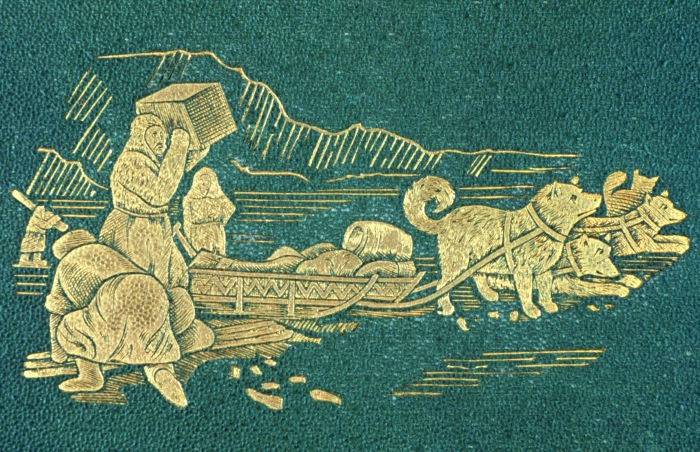
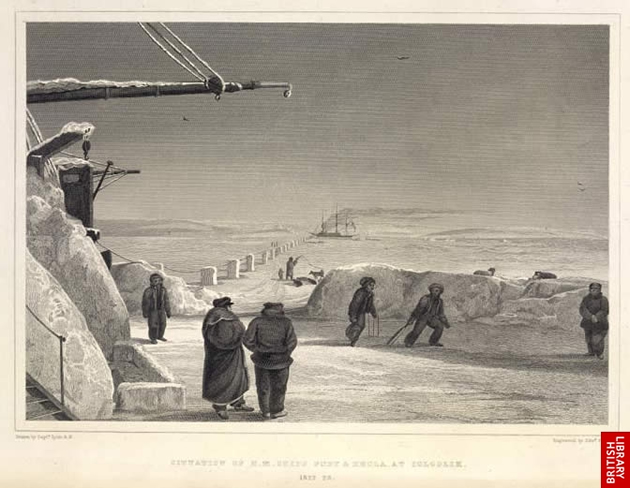
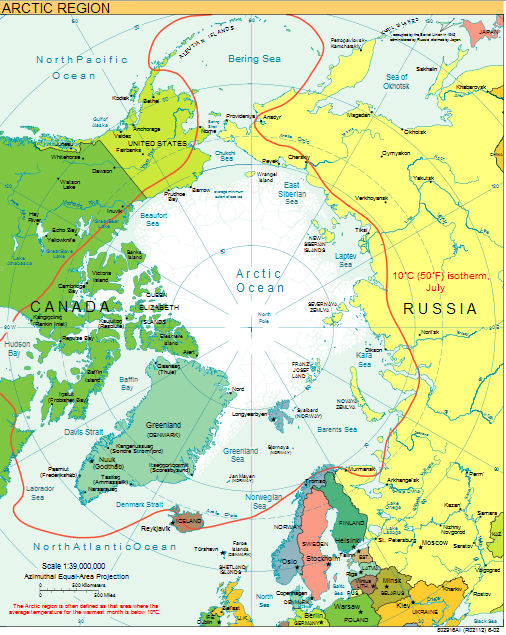
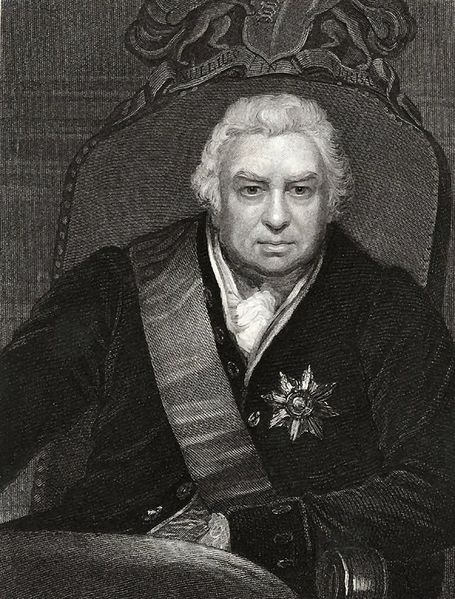
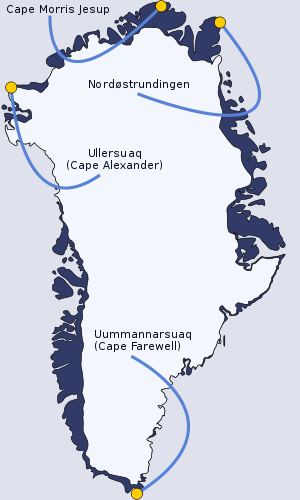
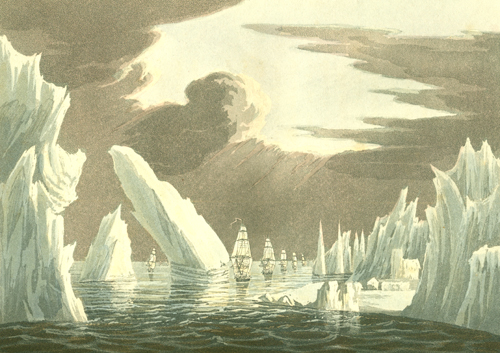
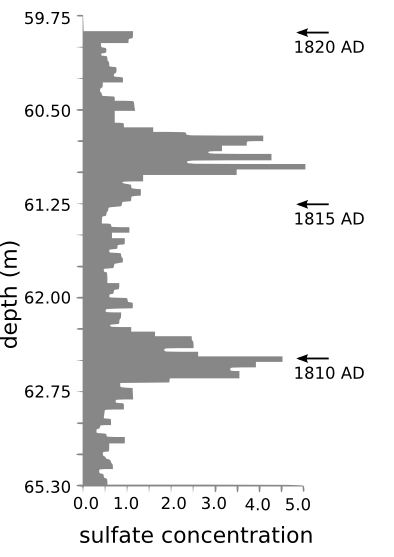
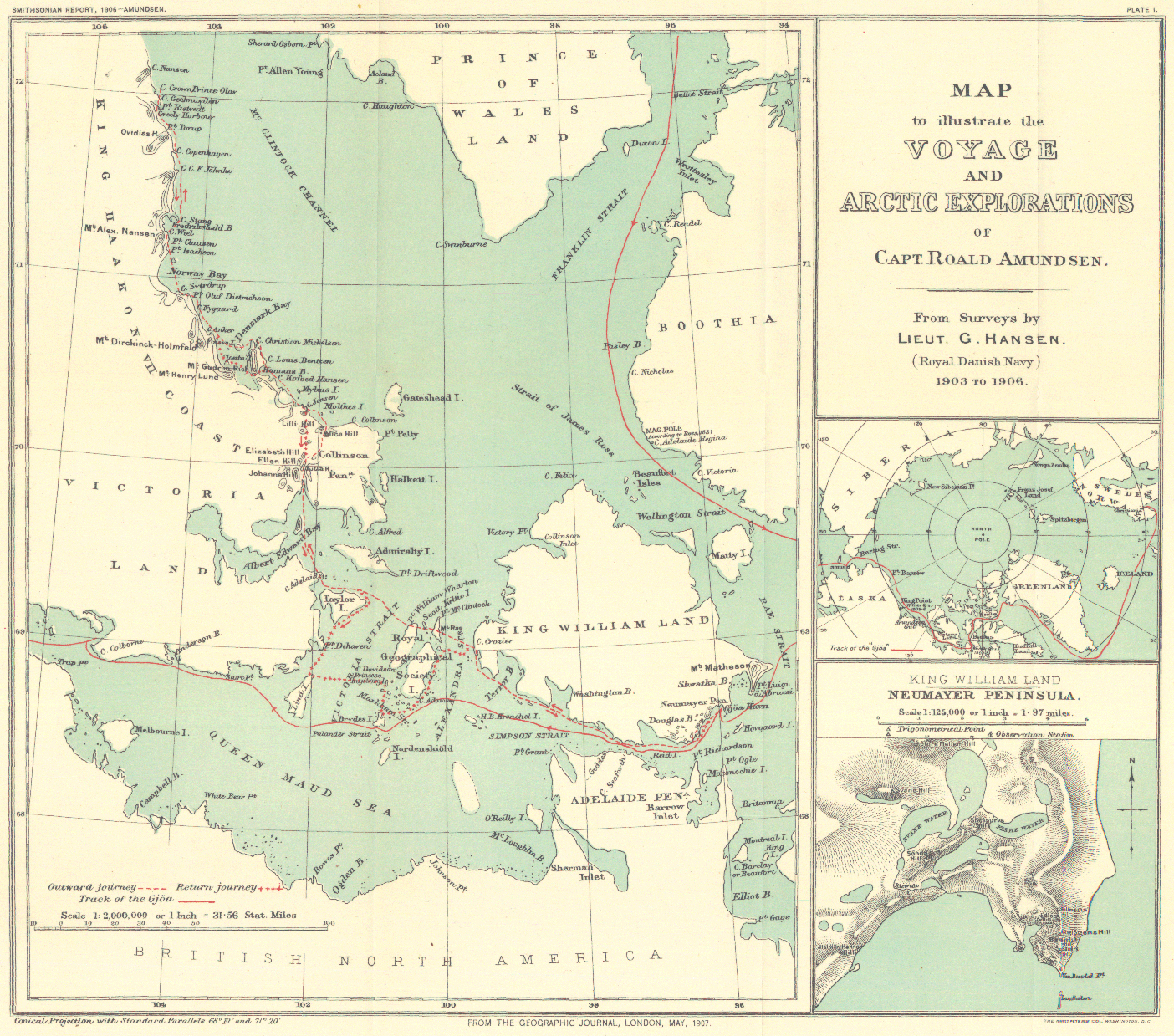
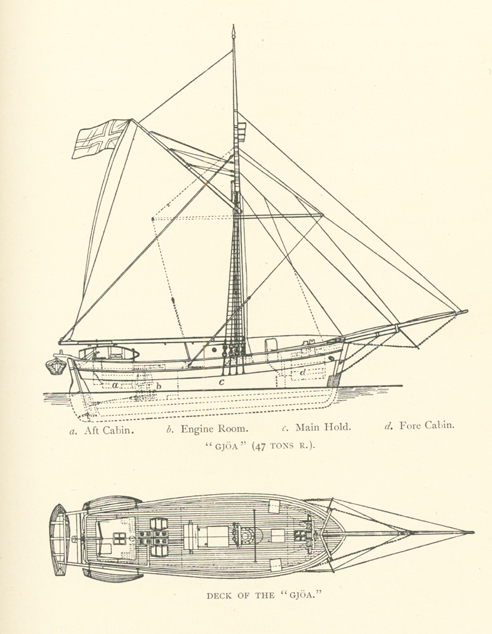
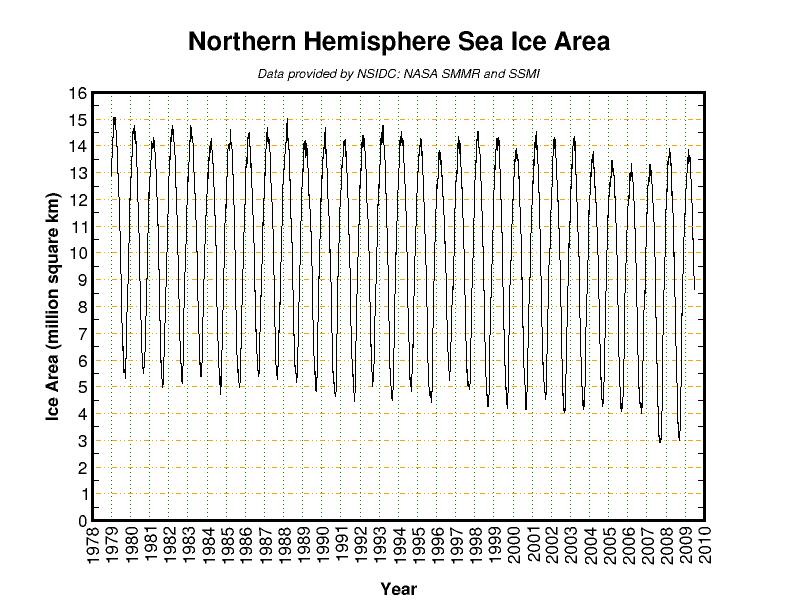



Reader Comments
to our Newsletter